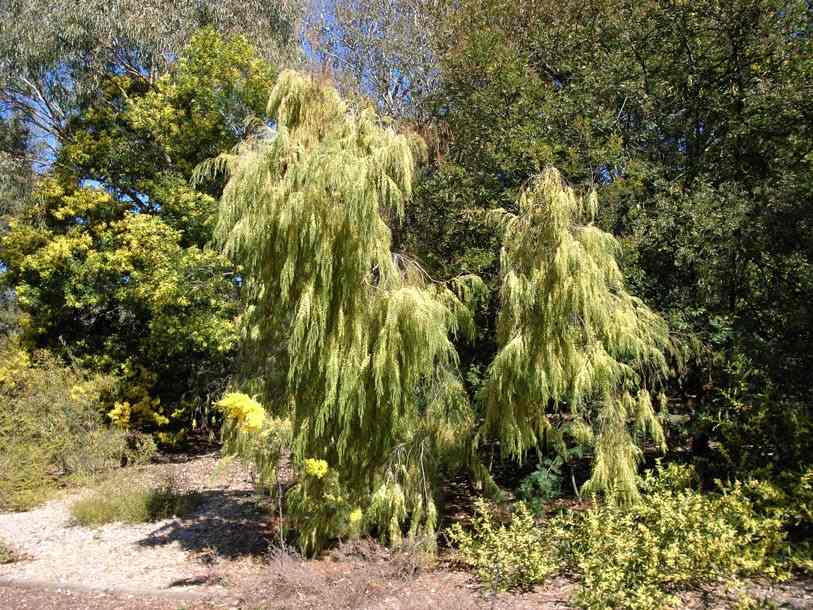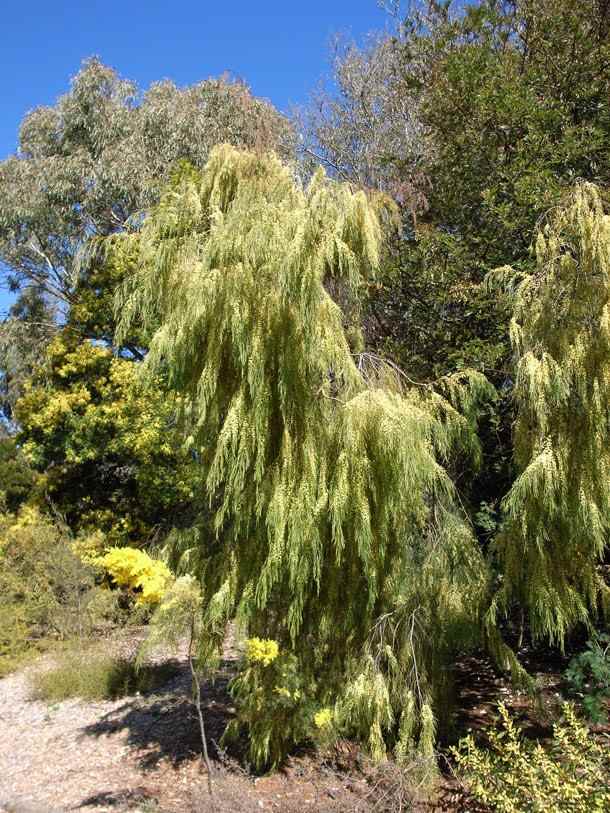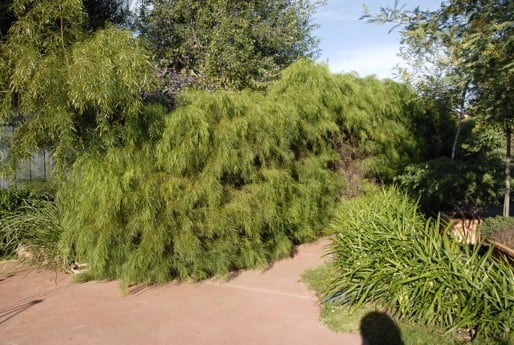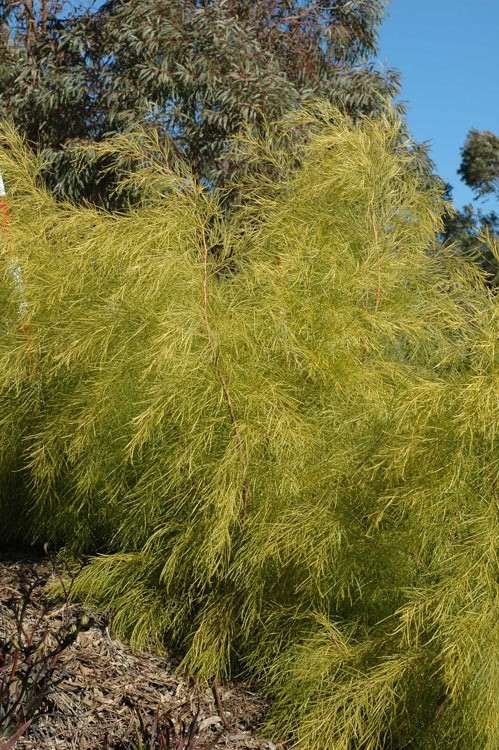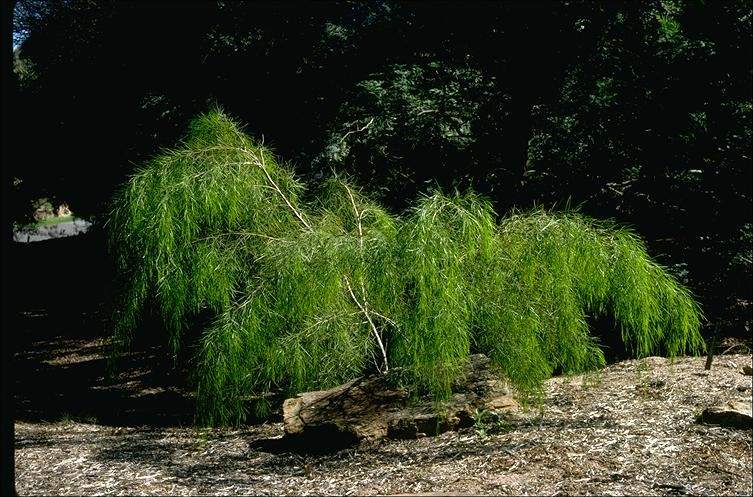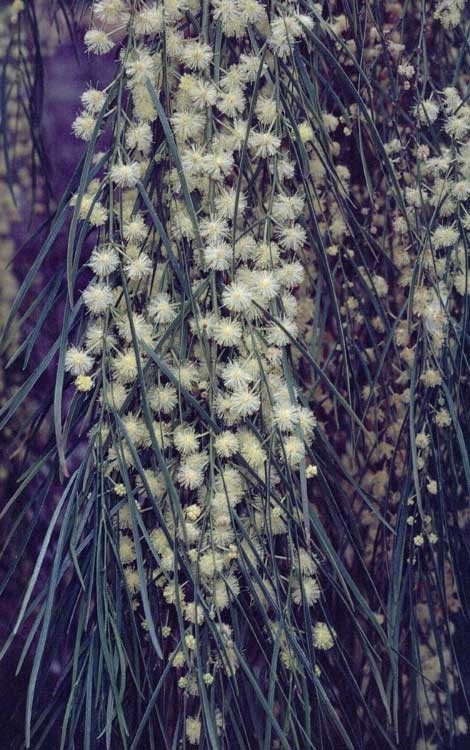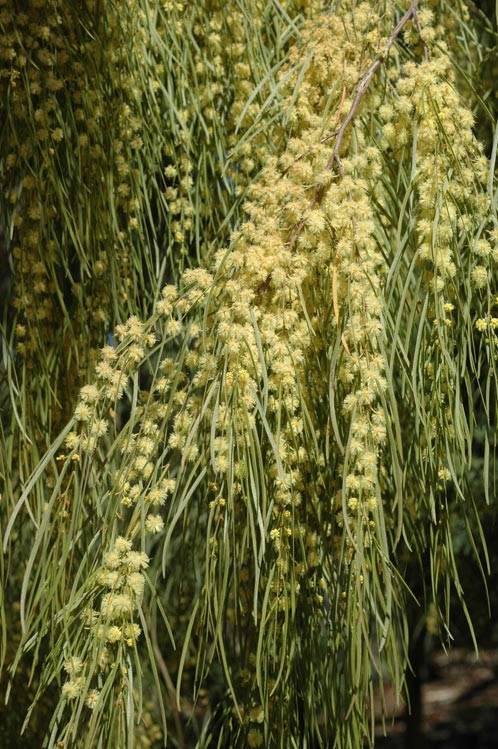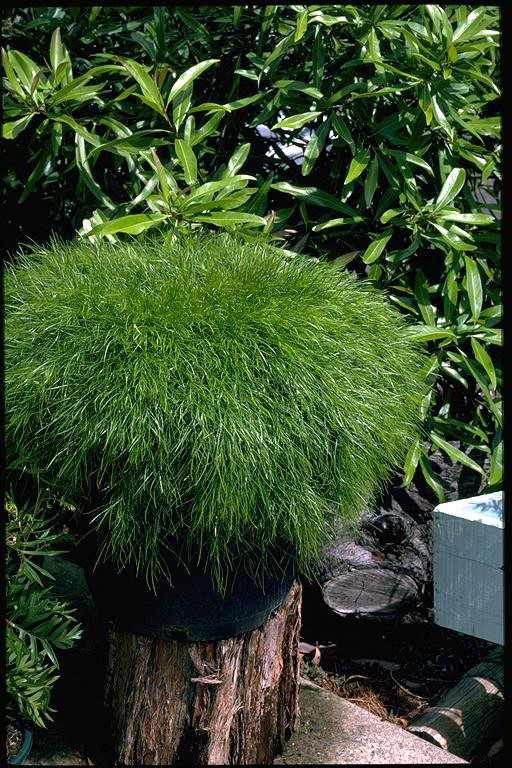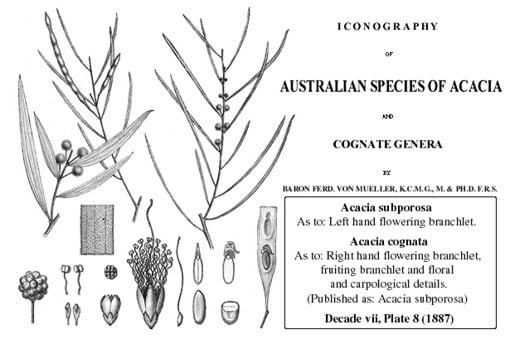Acacia cognata Domin
WATTLE
Acacias of Australia
Common Name
Narrow-leaf Bower Wattle, Bower Wattle, River Wattle
Family
Fabaceae
Distribution
Occurs in south-eastern Australia on the coastal plain and adjacent foothills of the Great Divide from near Nowra, N.S.W., S to near Orbost, Vic.
Description
Shrub or tree 3–10 m high, ±viscid. Branchlets willowy and arching to pendulous, commonly glabrous with longitudinal resinous bands alternating with green to brown ribs. Phyllodes narrowly linear to linear-elliptic, (4–) 5–10 cm long, 1–3.5 (–4.5) mm wide, l:w = 20-70, thin, dark green to yellowish green, resinous-punctate, glabrous except margins typically ±antrorsely puberulous, normally 3-nerved per face with the central nerve clearly the most prominent (the 2 flanking nerves often scarcely visible); lateral nerves few, obscure, occasionally anastomosing. Inflorescences simple, 2 per axil; peduncles 3–6 (–10) mm long, ±appressed-puberulous; basal bract persistent; heads globular, 4–5 mm diam., 10–17-flowered, pale lemon-yellow. Flowers 5-merous; sepals united. Pods linear, to 10 cm long, 2–4 mm wide, chartaceous, glabrous. Seeds longitudinal, oblong, 4–4.5 mm long, dull, dark brown; aril terminal.
Habitat
Grows in moist gullies and on hillsides in lowland sclerophyll forest, on sandstone and in soils derived from granite.
Specimens
N.S.W.: Princes Hwy, Corunna State Forest, 9.7 km S of Narooma, R.Coveny 2922 (NSW, PERTH). Vic.: Smellies Ck, Mallacoota Inlet area, A.C.Beauglehole 33738 & K.Morrison (MEL); Eleven Bob Track, 2.1 km from Mt Buck, H.van Rees 022 (MEL).
Notes
Some of the phyllodes on R.Coveny 2921 (MEL, NSW) are up to 4.5 mm wide, but those on R.Coveny 2922, collected in the same general area, are uniformly narrower. The number of main nerves varies because the longitudinally trending secondary nerves sometimes coalesce to form weaker, pseudo-primary nerves.
Frequently cultivated in Vic.
Closely allied to A. subporosa which has less pendulous branches and branchlets, broader phyllodes with more nerves per face, commonly longer peduncles, larger heads with more flowers and slightly wider pods; the two are sympatric at Twofold Bay, the type locality for both species, where they may possibly intergrade, fide R.S.Cowan & B.R.Maslin, Nuytsia 10: 78 (1995). A member of the A. verniciflua complex and sometimes confused with A. stictophylla from the Dandenongs, Vic. The W.A. species A. vittata has the same sort of branchlet resinosity alternating with longitudinal non-resinous bands, but it is distinguished especially by its wider, multi-nerved phyllodes, more flowers per head, smaller pods and shorter seeds. Also similar to A. veronica and A. viscidula, both of which have 4‑merous flowers. There are numerous cultivars, many registered, recognized for this species, see E.Brueggemeier, Australian Plants 25: 258–263 (2010) for descriptions and photographs of most. The cultivar Acacia verniciflua ‘Curtain Call’ is a suspected hybrid between A. cognata and A. verniciflua, see E.Brueggemeier, op cit. 265.
FOA Reference
Data derived from Flora of Australia Volumes 11A (2001), 11B (2001) and 12 (1998), products of ABRS, ©Commonwealth of Australia
Author
B.R.Maslin
Minor edits by B.R.Maslin, J.Reid & J.Rogers
This identification key and fact sheets are available as a mobile application:
URL: https://apps.lucidcentral.org/wattle/
© Copyright 2018. All rights reserved.
